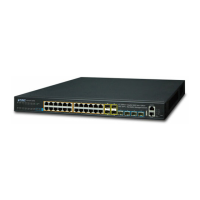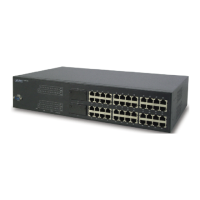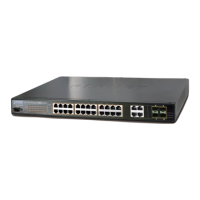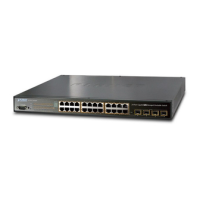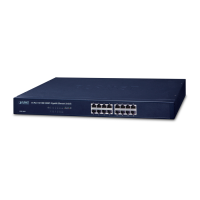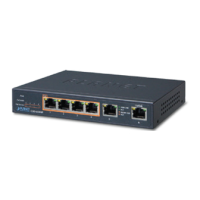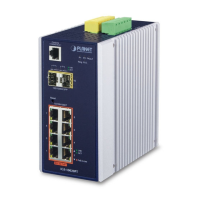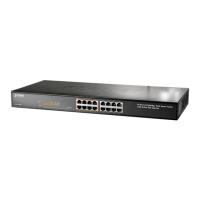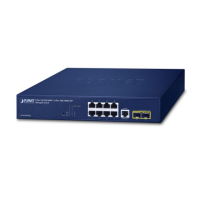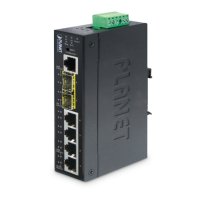78-14
Usage Guide:
Enabled: Automatically detect PD. In such a state, PSE will automatically detect and classify a PD,
and provide power supply for it according to the classification. If a PD connection is detected, its
specified output power will be satisfied as long as there is enough available power, after which the
corresponding LED indicator will be updated. Otherwise, the power distribution rules will decide
whether or not to implement this power supply. During a normal power supply process, if PD
requires for an extra power which exceeds the max threshold value, the supply will be cut off and
the corresponding LED indicator will be updated. When the PD is disconnected from the PSE
normally, PSE will stop outputting power supply and update the corresponding LED indicator.
Disabled: Disable power supply. With the PSE power supply disabled, no power will be output
regardless of the existence of PD connections, which means the port will act as a regular Ethernet
data port without affecting data transmission.
When it is globally disabled, no power supply will be output regardless of the power supply is
enabled or disabled on ports.
Examples:
Disable power supply on ports1, 3, 4, 5, 6.
Switch(Config)# interface ethernet 1/0/1;3-6
Switch(Config-Port-Range)#no power inline enable
78.1.3 power inline high-inrush
Command:
power inline high-inrush enable
no power inline high-inrush enable
Function:
Enable the allowed high-inrush current when nonstandard PD is powered instantaneously, disable
the allowed high-inrush current.
Parameter:
None.
Command Mode:
Global mode
Default:
The allowed high-inrush current is not enabled.
Usage Guide:
high-inrush current will be brought when nonstandard PD is powered instantaneously, it will result
PSE self-protection to make PD power failure. Here, if this nonstandard PD must be powered, it
needs to allow the high-inrush current.
Example:
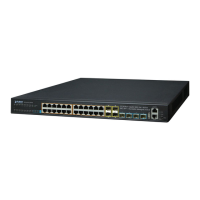
